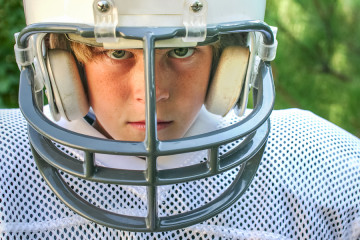NFL’s Concussion Deal Upheld on Appeal as Imperfect But Fair

published Apr 18th 2016, 5:34 pm, by Sophia Pearson and Jef Feeley
(Bloomberg) —
The National Football League’s $765 million concussion settlement was found by a federal appeals court to be fair, if imperfect.
The decision sets in motion the resolution of thousands of lawsuits covering more than 20,000 retired players. About 1 percent opted out of the settlement, which is to compensate for head injuries over the next 65 years.
The U.S. Court of Appeals in Philadelphia issued its ruling Monday upholding a trial judge’s finding last year that the accord was a reasonable resolution of former players’ head-injury claims.
“It is the nature of a settlement that some will be dissatisfied with the ultimate result,” Circuit Judge Thomas Ambro wrote on behalf of the three-judge panel. The accord “is a testament to the players, researchers, and advocates who have worked to expose the true human costs of a sport so many love. Though not perfect, it is fair.”
In lawsuits consolidated before U.S. District Judge Anita Brody in Philadelphia, players accused the NFL of negligence and failing to inform them of the link between repeated traumatic head impacts and long-term brain injuries.
Alzheimer’s, Parkinson’s
The settlement, the result of two years of negotiations, includes cash for retirees suffering from a list of injuries including Alzheimer’s disease, Parkinson’s disease and amyotrophic lateral sclerosis, known as ALS or Lou Gehrig’s disease.
NFL officials Monday hailed the appeals court’s decision to sign off on the settlement.
The accord “reflects the decision of the clubs to set aside strong legal and factual defenses, and instead provide medical care and compensation for retirees and their families,” Jeff Pash, the NFL’s general counsel, said in an e-mailed statement.
“We are disappointed with the court’s decision and we are considering our legal options,” said Steven Molo, a lawyer for Alan Faneca, a former Pittsburgh Steelers offensive lineman and three other ex-players who objected to the settlement.
The appeal’s court rejection of challenges to the settlement should be the last word on the deal, according to Chris Seeger, a plaintiffs’ lawyer who helped negotiate the accord.
“This extraordinary settlement’s implementation has been delayed enough by this small group of objectors, whose arguments have been exhaustively examined and overruled,” he said in an e-mailed statement. “We hope they will consider the over 20,000 retired players and their families that support this agreement before filing additional appeals that will only extend these delays further.”
CTE Symptoms
The appeal focused on the treatment of players with symptoms of chronic traumatic encephalopathy, or CTE, a brain disease that can’t be diagnosed in living people. Under the accord, families of players who died from CTE before the deal’s final approval would receive as much as $4 million each. Those living with symptoms of the disease, which include mood and behavioral changes and suicidal thoughts, would get far less if anything, lawyers for objectors argued.
The average CTE payment under the deal is about $1.4 million, Deepak Gupta, an attorney for objecting players, told the appeals court in November.
Lawyers for the objecting players questioned the fairness of a deal in which 72 percent of the class is getting nothing. The vast majority of retired players have not yet been diagnosed with a qualifying injury, Gupta said. They also challenged the idea that the former players’ cases could be joined together in a class-action suit.
Suicide Link
CTE has been linked to the suicides of Pro Bowl San Diego Charger linebacker Junior Seau and Chicago Bears’ safety David Duerson. Seau’s family opted out of the settlement to pursue its own claims.
Other problems with the settlement included a $1,000 fee levied on former players to appeal a ruling that they didn’t meet the criteria to receive compensation while the NFL could appeal without paying a dime, according to an August 2015 filing by Molo. Other objectors in the group included Sean Considine, a former Philadelphia Eagles defensive back, and Jeff Rohrer, an ex-Dallas Cowboys linebacker.
In the court’s ruling, Ambro said that while objectors argued players suffered different types of injuries at different times, the cases were properly combined in a class-action lawsuit because those injuries resulted “through the same cause of conduct,” meaning during football games. The players’ claims also all depended on common questions about the NFL’s conduct, Ambro added.
The case is In Re National Football League Players Concussion Injury Litigation, 15-2206, U.S. Court of Appeals for the Third Circuit (Philadelphia).
To contact the reporters on this story: Sophia Pearson in Wilmington, Delaware at spearson3@bloomberg.net ;Jef Feeley in Wilmington, Delaware at jfeeley@bloomberg.net To contact the editors responsible for this story: David Glovin at dglovin@bloomberg.net Joe Schneider, Charles Carter
copyright





No Comment